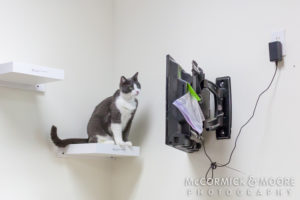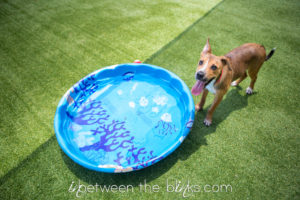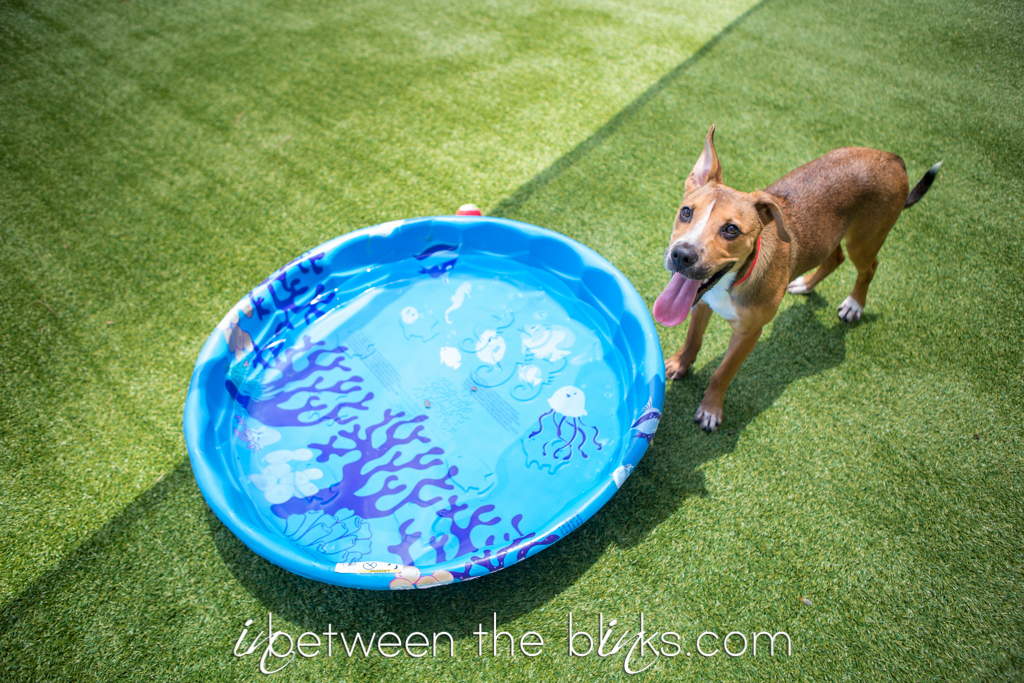As temperatures remain high and summer travel and holiday celebrations approach, there are many things that can cause stress for your pets or pose a danger. Here are some things to keep in mind especially during the week of July 4th.
July is "Lost Pet Prevention Month." Few things are as stressful as searching for a lost pet. Here's how to decrease your pet's chances of becoming lost and how to make sure you're quickly reunited if you are separated.
- Microchip, microchip, microchip! If your pet isn’t microchipped, fix that as soon as possible. See if there are any upcoming microchip clinics happening in your area. If there aren’t, your veterinarian should be able to do it. If Fluffy already has a chip, good for you! Take him by the vet to have his microchip scanned to ensure it’s still working. Also, get in touch with the company you registered the chip with to confirm they have your current contact information.
- Prevent escapes! If you have a fenced yard, regularly check the fence line. Make sure the posts feel sturdy and check around the bottom for holes or signs of digging. You may also want to pull objects (like chairs, trash cans, etc.) away from the fence so you don’t unintentionally give Fluffy a boost to jump over the fence.
- Your pet has other plans in mind for Independence Day. Many of us love a good picnic and fireworks to celebrate Independence Day, but your pet doesn’t see it as a beautiful light show. Dogs hear loud, terrifying noises and can’t understand that they don't need to be afraid. Pets would be much happier celebrating at home with a delicious treat (like a Kong stuffed with treats and peanut butter). You can get your quality time together that day by going for a walk in the morning.
Fourth of July:
- Keep pets at home rather than taking them into a crowded celebration for fireworks show.

Leave a television or radio on to block some of the noise from fireworks. Your pet might just find a new favorite show. - Keep pets inside the house where they’re safest. Even a cat who generally sticks close to home or a dog who doesn’t jump the fence can be startled by fireworks. If they panic, they may jump fences and run further away than they ever would on a normal day.
- Give your pet a safe place. Many pets have a place in the house they feel is safer than other spots. It could be their crate, a closet, or even the laundry room. Make sure they can access that area.
- Do what you can to block the sound of fireworks. Keep the windows closed and turn on a television or radio.
- If your pet is very sensitive to noise, talk to your vet to see if medication may help ease their anxiety.
Beating the Heat:
- Be aware of heat stress/stroke. Watch for excessive panting or grooming, drooling, lethargy, stumbling, sweaty paws (cats), vomiting, redness of the tongue or mouth. If you start to see these signs, get your pet in a cool spot immediately, offer cool water to drink and call your veterinarian. Consider putting out a kiddie pool or sprinkler when you’re around to supervise. Just like us, many dogs love to play in the water and it will help cool them off. A good general rule is if it is too hot for you, it is too hot for your pets.
- Put the car rides on hold. When it’s 78⁰F outside, a closed car can reach 90⁰F in just five minutes and 110⁰F in 25 minutes. Instead of a dangerous summer car ride, show your pet you love him by leaving him at home in the air conditioning with a tasty chew.

A kiddie pool or sprinkler is a fun way to help your pets cool off if you're there to supervise. - Plan your walks accordingly. Many of us know to bring plenty of water for walks during those hot summer days. We may also know to watch for signs of heat stroke. What we may forget when we lace up our sneakers and head out with our dog is that the pavement can be much hotter than the temperature outside. A simple test: put the back of your hand on the pavement and leave it for at least seven seconds. If that’s not comfortable for you, then you run the risk of burning your dog’s sensitive paw pads. Try walking early in the morning or late at night when the pavement will be cooler or sticking to a grassy area.
Preparing for Hurricane Season and Natural Disasters:
First, make sure you have visible pet identification for each family pet. If possible, attach the address and/or phone number of your evacuation site. Please consider microchipping your pets. This is one of the best ways to make sure you and your pet are reunited if you do become separated.
Second, put a pet emergency kit together. In addition to this checklist from Ready.Gov, here is a quick review of essential items:
- 3-Days of food kept in an airtight, waterproof container. Remember to include a can opener.
- 3-Days of water specifically for your pets
- Medicines and Medical Record, including vaccination documents in a clear waterproof bag.
- First-Aid Kit. Talk to your veterinarian about your pet’s emergency medical needs. Most kits will include bandage rolls, bandage tape, scissors, antibiotic treatment, flea and tick prevention, latex gloves, isopropyl alcohol.
- Collar or harness and leash. Your pet should wear a collar with rabies tag. Include extra in your emergency kit
- Crate or Pet Carrier
- Pet Litter, Litter Box and paper towels, trash bags and household chlorine bleach
- Favorite Things! Put toys, treats and bedding in the kit. This helps reduce stress for your pet
- Picture your pet and a photo of you and your pet together. If you become separated during an emergency, a picture of you and your pet together helps document ownership and allows others to assist you in identifying and reuniting you and your pet. You may also consider writing a pet "resume" that includes detailed information about your pet.
Third, make sure you know what to do should you have to evacuate. Plan on taking your pet with you and learn whether evacuation sites allow for pets. Some shelter sites might not allow pets inside the shelter. Find out BEFORE an emergency happens whether certain facilities in your area are viable options for you and your pets. Have a friend or neighbor lined up to reach your pet if you cannot get home to them.

